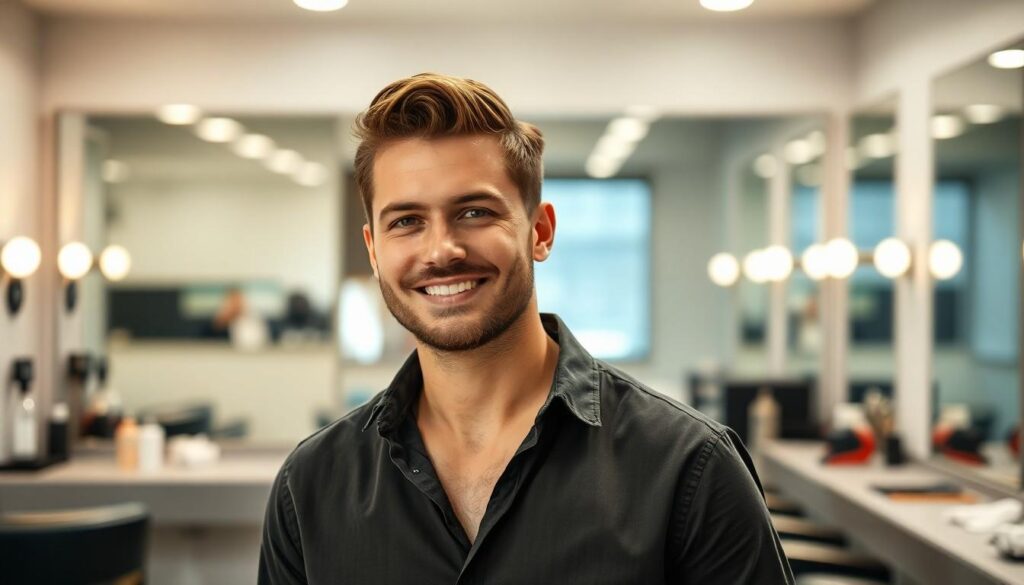Choosing the right haircut can completely transform our look and boost our confidence. When it comes to classic styles that never go out of fashion the debate between taper and fade haircuts always comes up. Both offer sharp clean lines and a polished finish but they each have their own unique flair.
We all want a style that fits our personality and lifestyle. Whether we’re after a subtle change or a bold new look understanding the difference between a taper and a fade is key. Let’s break down what sets these cuts apart so we can find the perfect fit for us.
Understanding Taper Vs Fade Haircut: Key Differences
Let’s clear up the confusion between taper and fade haircuts. Each offers a modern style and polished look, but knowing the key differences helps us pick the best fit for our personal taste and lifestyle.
Defining A Taper Haircut
We see a taper haircut as a more gradual option. Tapers slowly decrease hair length from the top of our head down to the neckline. Salons usually keep the hair around the ears and back longer than with a fade. Barbers blend tapers seamlessly into our natural hairline for a softer, low-maintenance appearance. We often choose a taper for timeless, versatile styling that works in business or casual settings.
Defining A Fade Haircut
Everyone talks about fades for that sharp, bold finish. A fade haircut quickly reduces hair length from longer on top to almost no hair on the sides or back. Stylists transform the look by creating a dramatic contrast between the top and the skin with precise clipper work. Lines stay crisp, and fades demand attention whether we go for a low, mid, or high fade. Our go-to for showing off strong lines and contemporary style is always a fade.
Comparing Taper Vs Fade Haircut Styles
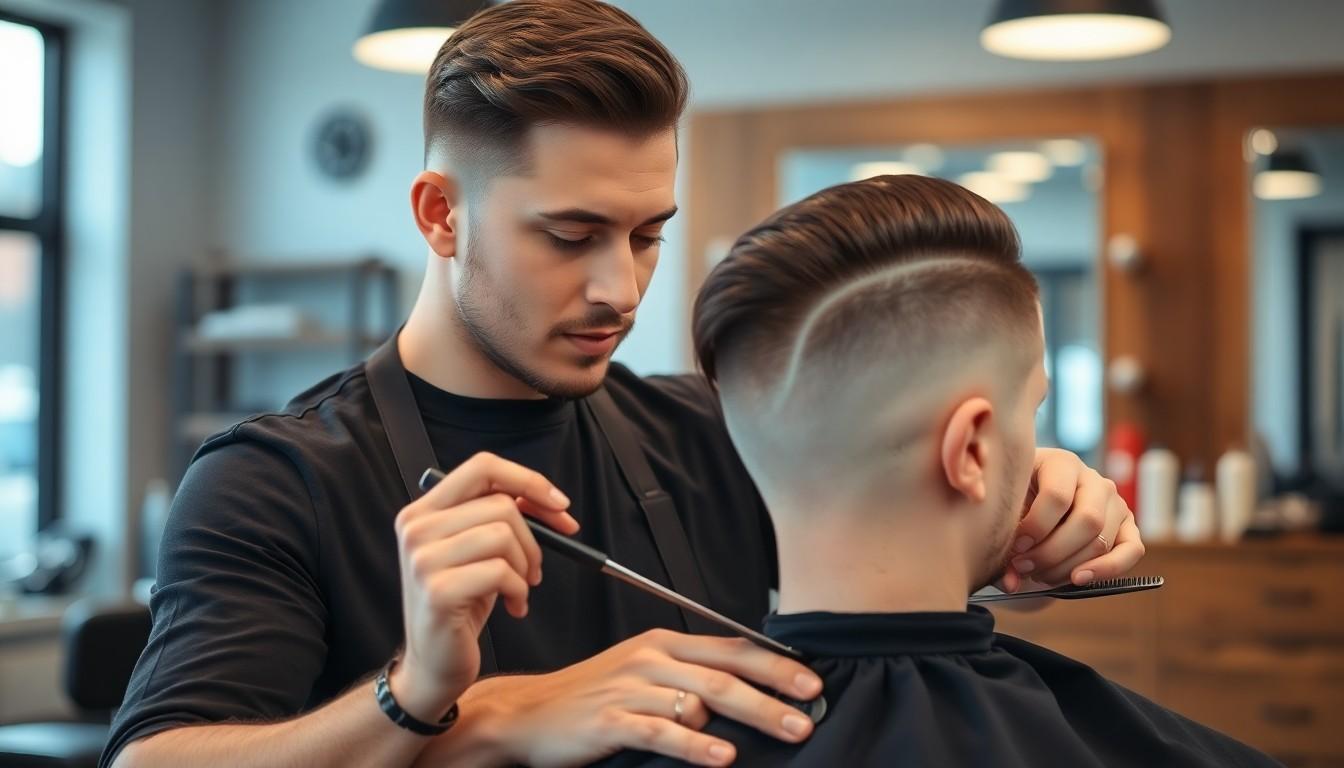
Let’s break down how tapers and fades truly stack up when it comes to style and technique. We’ll look at what sets them apart visually, and how each approach transitions and blends hair length.
Visual Differences Between Taper And Fade
A taper stands out for its subtle, gradual change from long to short hair. We notice this especially around the ears and neckline, where the hair remains longer and follows a natural line. Most clients see tapers as neat and polished—think business-ready and understated, never too sharp or severe.
On the flip side, a fade jumps out with its bold, dramatic effect. Fades quickly move from longer hair on top to ultra-short or even skin all along the sides and back. You’ll spot a striking contrast, where the top seems to almost float over a borderless, closely cut base. This high-impact look draws attention and sets a modern, edgy tone.
Length Transitions And Blending Techniques
With a taper, the change in hair length is gradual. We use clippers and scissors to reduce the length smoothly as we follow the hair’s natural shape, working from the crown down to the neckline. There’s no harsh line, so the result feels soft and seamless.
Fades require precision and create sharp, defined transitions. We move from longer hair up top to nearly skin along the sides, using several clipper guard sizes—each carefully blended down. This steep length shift forms a crisp edge and a more striking silhouette.
Sometimes, we go for a hybrid: the taper fade. This technique combines the gradual transition of a taper with the bold, skin-close finish of a fade, delivering a look that’s both clean and contemporary.
Exploring Types Of Taper Haircuts
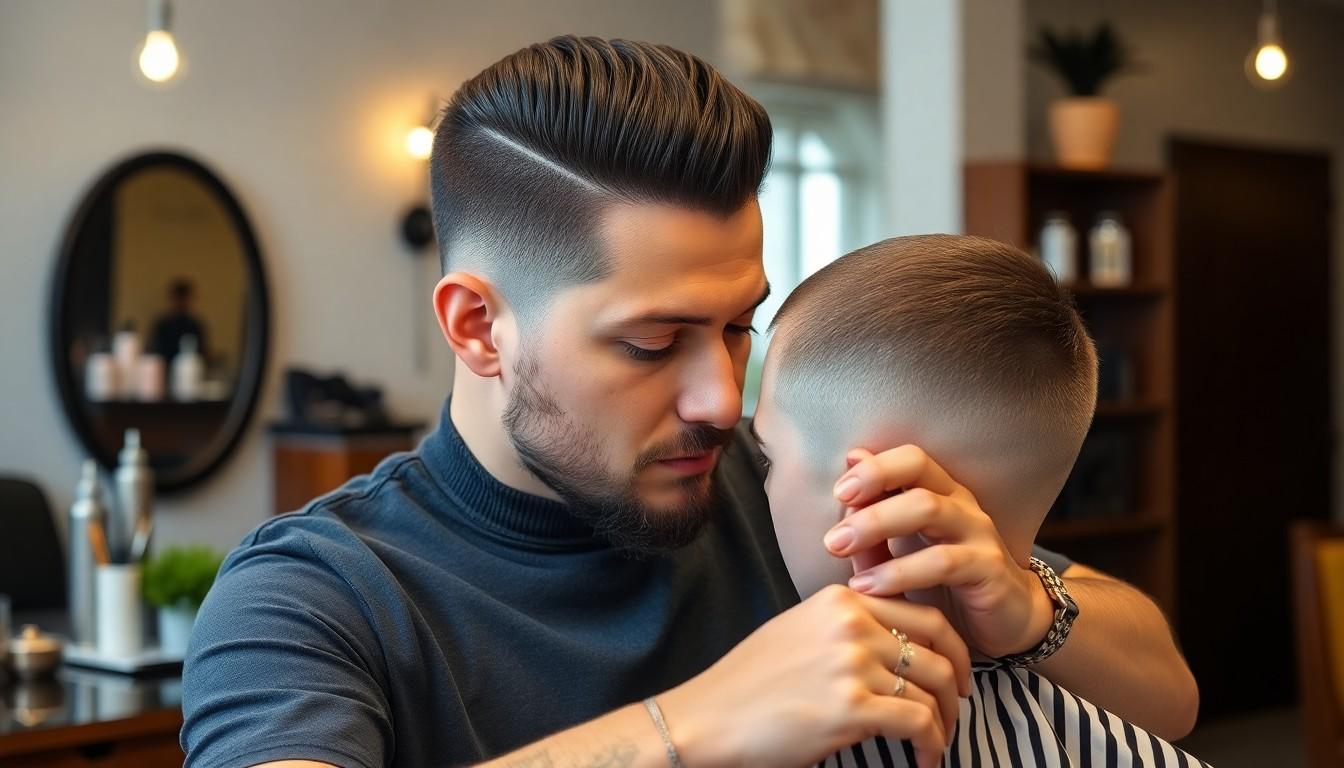
Let’s break down the most popular types of taper haircuts. Each taper style offers its own take on gradual blending, so there’s something for every look and lifestyle.
Classic Taper
We see the classic taper stand out for its smooth, effortless transition from longer hair on top to shorter hair along the sides and back. Unlike styles with hard lines, this one blends hair cleanly with the natural hairline for a look that always feels put together. Barbers blend the top and sides seamlessly, making it easy to style and suitable for nearly every face shape.
Low Taper
A low taper comes into play just above the ears and continues to the neckline, making it a top pick for those of us looking for something subtle yet sharp. Professionals often choose this style since it appears neat and conservative but still brings a touch of modern polish. Since low tapers require minimal upkeep, we enjoy longer stretches between visits to the barbershop compared to other styles.
High Taper
We notice the high taper isn’t as widely discussed, but it definitely has its fans. This version sees the taper starting higher up on the head, giving a more noticeable reduction in length on the sides without jumping into harsh, dramatic lines. Although information can be scarce, the high taper lets us enjoy a modern twist while keeping the transition much softer than a fade.
Exploring Types Of Fade Haircuts
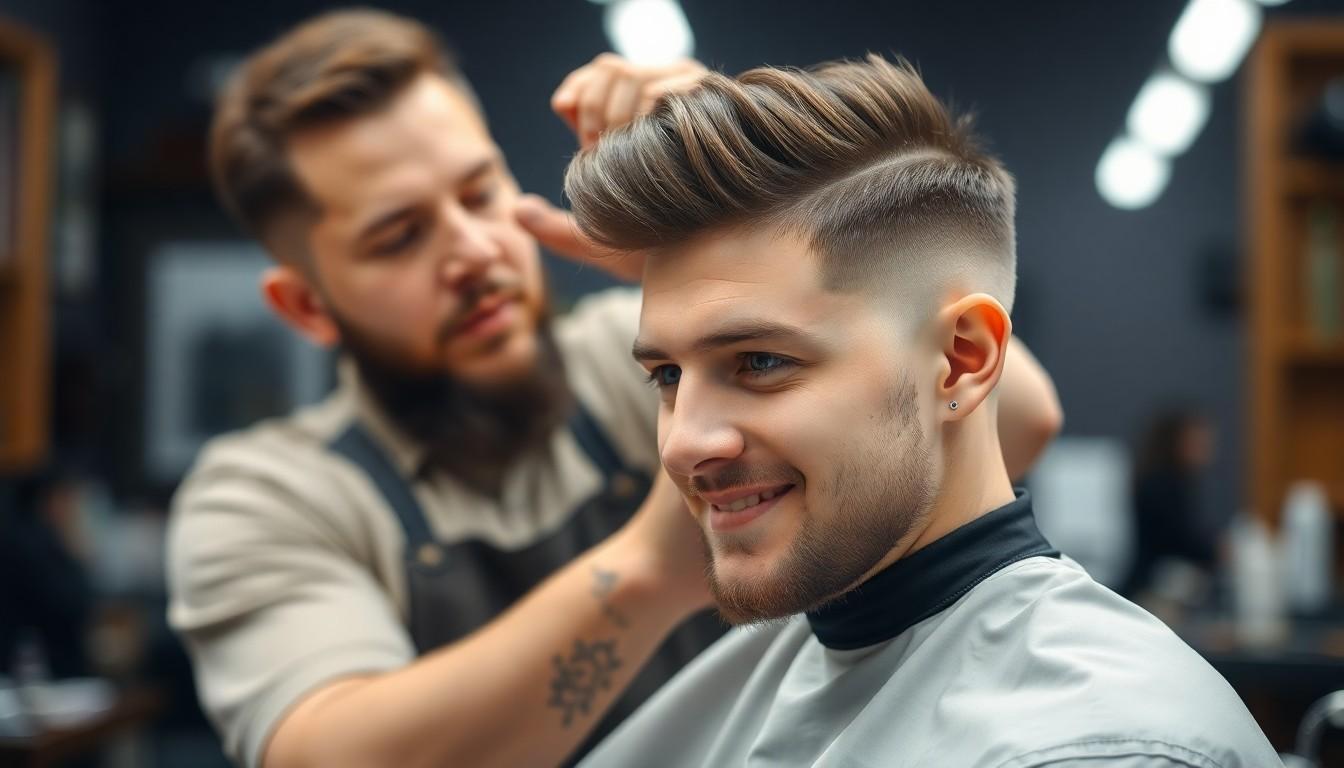
Let’s jump into the unique qualities that set each fade haircut apart. These fade types let us personalize our hair’s contrast and sharpness, giving everyone something that fits their style perfectly.
Low Fade
A low fade offers a subtle, clean look we can count on for daily versatility. This fade begins just above the ears and hugs the neckline, keeping longer hair higher up. Many of us appreciate how the soft graduation enhances all face shapes and works with neat side parts or textured tops.
Mid Fade
With a mid fade, we strike the perfect balance between understated and bold. This fade starts between the temples and the ears, providing a visible yet moderate transition. Our clients often ask for this fade since it suits nearly every hair type and adapts to both professional and casual settings.
High Fade
Choosing a high fade instantly creates a dramatic, standout appearance. The fade line starts near the temples or even closer to the hairline, dropping swiftly down the sides and back. We love the bold contrast this cut delivers for those of us craving a modern, attention-grabbing style.
Skin Fade
Going for a skin fade means making the strongest impression. Barbers clip hair right down to the skin at the very bottom, creating a razor-sharp contrast with longer hair on top. Whether we want to showcase tattoos or keep cool, this intense style highlights precision and confidence every time.
Evaluating Pros And Cons: Taper Vs Fade Haircut
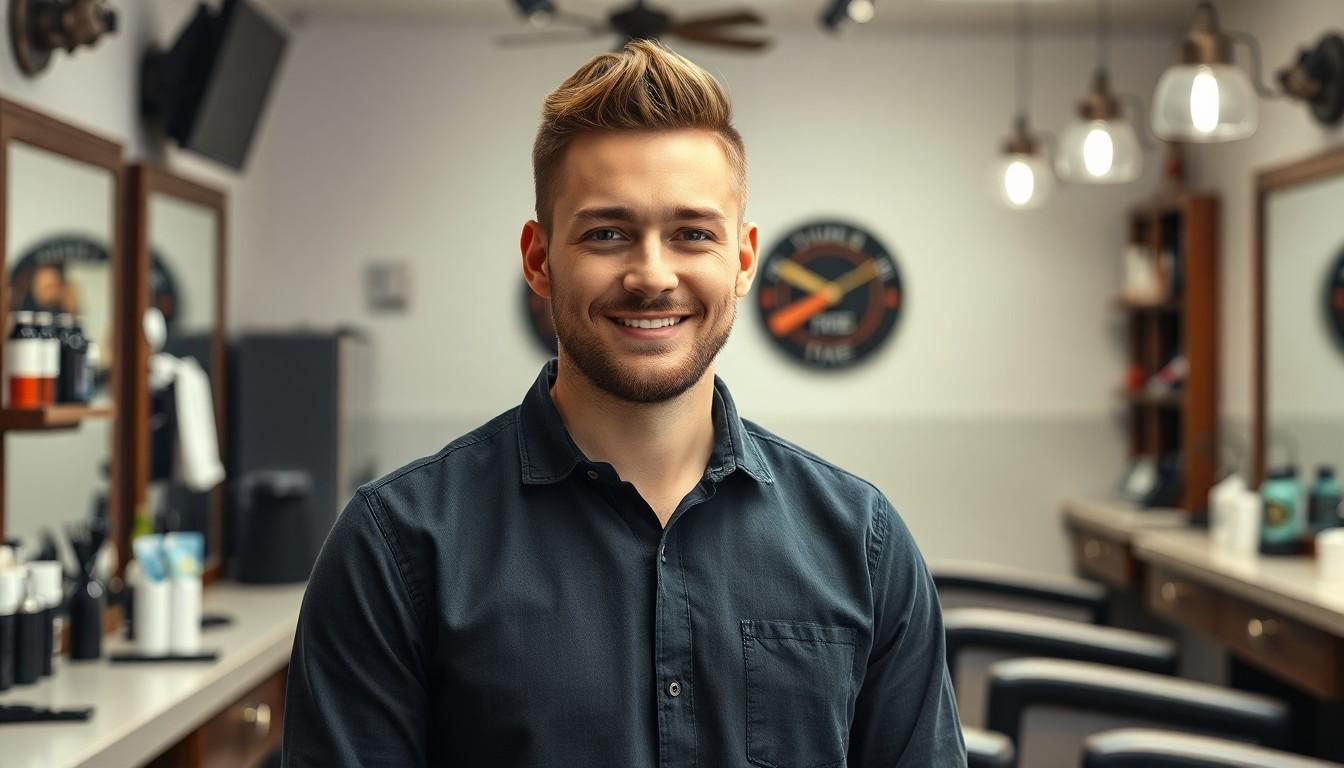
We know picking between a taper and a fade comes down to understanding what each style offers and how it fits our needs. Each option brings unique advantages and a few challenges depending on our hair type, lifestyle, and confidence in styling.
Benefits Of A Taper Haircut
Tapered haircuts let us enjoy a gradual length change, making that transition from long to short hair appear natural. They’re evenly cut, so our overall look feels more subtle and less dramatic than a fade. With longer hair left on the top and sides, we have a ton of styling options—think side parts, pompadours, or curls. Taper styles work well with almost any face shape, meaning we can experiment without worrying about looking out of place. Versatility and a softer finish make this a good choice if we prefer both business and casual looks.
Benefits Of A Fade Haircut
When we want eye-catching contrast, fades provide a bold, modern look that really stands out. Crisp, clean lines allow our haircut to look ultra-neat, especially with regular trims. Low maintenance on the sides and back is a huge plus—high fades usually mean less daily upkeep for us, with much of the hair kept extremely short or even shaved. Fades give us a statement style, drawing attention for all the right reasons.
Potential Drawbacks Of Each Style
Tapers demand more from us when it comes to maintenance—we often need to style the longer top and sides, and the blend of lengths can get tricky if we’re not skilled. Regular trips to the barber help keep our taper looking fresh, since even a bit of growth can throw off the clean look. For fades, the dramatic contrast isn’t for everyone and might not fit into conservative offices or more traditional environments. Some fades highlight certain face shapes, sometimes accentuating features we’d rather minimize. Keeping the fade line sharp takes commitment, as the transition between lengths can start looking messy without frequent touchups.
Here’s a quick comparison of maintenance needs and suitability:
| Style | Maintenance | Styling Effort | Best For | Possible Issues |
|---|---|---|---|---|
| Taper | High | Medium-High | Versatile, subtle | Needs frequent barber visits |
| Fade | Medium | Low-Moderate | Modern, bold | Can look too dramatic |
Each haircut gives us the flexibility to showcase our style, but balancing pros and cons helps us find the best fit for our routine and vibe.
Choosing The Right Haircut: Taper Vs Fade For Your Face Shape And Hair Type

Let’s talk about getting that flawless cut. Our face shape and hair type both play huge roles in picking between a taper or a fade. Here’s what we should keep in mind.
Best Hair Types For Taper And Fade
Straight, wavy, or curly hair all work great with a taper. This style adds dimension, which is perfect if we’ve got fine or straight hair, since it makes hair look fuller. Tapers look natural and blend especially well, helping us manage unruly textures without drastic changes.
Thick, textured, or curly hair shine with a fade. By emphasizing the shorter sides, fades show off our curls or texture up top. If we have super fine or straight hair, fades might look less dramatic, so tapers could be our better bet for keeping some volume and balance.
Suitability For Different Face Shapes
Square and heart-shaped faces soften nicely with a taper. By keeping hair gradually longer on the sides, tapers round out our features and downplay strong jawlines. We get a versatile look that blends with just about any face shape, so there’s total customization.
Round and oval faces pair well with fades. These cuts elongate the overall profile, giving us sharper, more defined angles around the cheekbones and jaw. Fades add boldness that flatters softer features and brings a modern edge to classic shapes.
For a middle ground, those of us craving both a subtle transition and a crisp finish could try a taper fade. This hybrid suits multiple hair types and most face shapes, offering flexibility we won’t get from either option alone.
Maintenance And Styling Tips: Taper Vs Fade Haircut
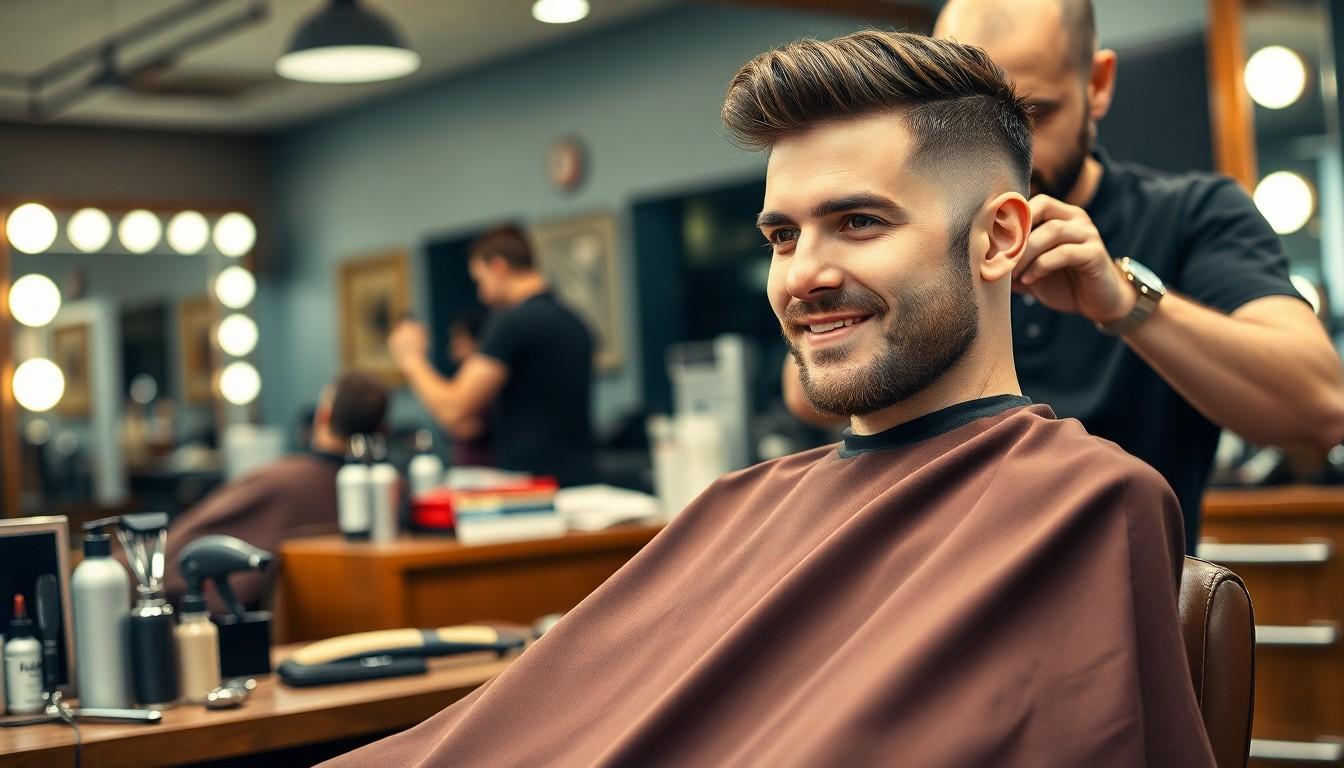
Let’s talk about what it takes to keep tapers and fades looking sharp. Small differences in upkeep and product choices can completely change how these cuts work for our everyday routines.
Tips For Upkeep And Growing Out
Taper haircuts don’t need constant barber visits like fades do. We notice that the gradual transition of a taper blends naturally as our hair grows, so missed appointments are less obvious. A taper lets us wait a few weeks longer between trims, making it ideal for busy schedules or if we prefer a low-maintenance look.
Fade haircuts, in contrast, really show when they’re overdue for a touch-up. Defined fade lines lose their crispness within just two or three weeks, especially with rapid hair growth. We’ll need to schedule regular barber visits—every two or three weeks—to keep that precise, bold effect intact. Growing out a fade feels trickier since the strong contrast makes regrowth more noticeable, meaning we might want interim trims to tidy up the edges.
A taper fade blends benefits from both cuts. We get a neat finish with sharpness around the edges that still grows out pretty naturally. This hybrid option strikes a balance, so it works well for us if we want both style and simplicity.
Recommended Hair Products And Styling Advice
Styling tapers feels easy. We usually reach for versatile products like pomades, light hold gels, or styling creams to switch up our look, whether polished or relaxed. Light hold products control the shape without weighing down the gradual layers, perfect for all hair types—including curly, straight, or wavy.
Choosing products for fades depends on improving texture and sharp definition. Texture sprays or creams help highlight the hair’s natural movement on top, while the ultra-short sides need special attention. Using a gentle shaving cream or aftershave balm soothes sensitive skin in closely shaved areas, reducing irritation.
Switching styles or maintaining any of these cuts gets simpler if we use products that fit our hair’s needs. The right routine lets us show off our taper or fade, no matter which one we choose.
Conclusion
Choosing between a taper and a fade haircut comes down to our unique style and daily routine. Both options let us express our personality while keeping our look sharp and modern.
When we work with our barber and consider our face shape and hair type, we can find a cut that truly suits us. No matter which style we pick, the right care and products will help us look our best every day.
Frequently Asked Questions
What is the main difference between a taper and a fade haircut?
A taper haircut gradually decreases hair length from the top to the neckline, maintaining some length around the sides and back for a softer look. In contrast, a fade haircut transitions hair quickly from long on top to almost no hair on the sides or back, creating a sharp, bold contrast.
Which haircut is easier to maintain: taper or fade?
Taper haircuts are generally easier to maintain because their gradual transition allows for longer intervals between barber visits. Fades require more frequent touch-ups—often every two to three weeks—to keep the defined lines crisp and sharp.
Which haircut suits a professional or business setting better?
A taper haircut suits professional or business settings better due to its clean, subtle, and polished appearance. Its versatility allows it to blend well in both formal and casual environments.
What are the most popular types of taper haircuts?
Popular taper haircuts include the classic taper (smooth transition and natural hairline), the low taper (subtle, professional look), and the high taper (modern style with a noticeable reduction in length but a softer transition than a fade).
What are the different types of fade haircuts?
Fade haircuts include the low fade (subtle and close to the neckline), mid fade (balanced and versatile), high fade (dramatic contrast near the temples), and skin fade (razor-sharp sides blending into the skin).
How do I choose between a taper and a fade for my face shape?
If you have a square or heart-shaped face, tapers are ideal for softening your features. Fades work well for round or oval faces, as they elongate the overall profile and create a more defined look.
Which haircut works better for thick or curly hair?
Fades are a great option for thick or curly hair, as they emphasize natural texture and give a cleaner, bold appearance. Tapers also work but add more fullness and dimension for straight or wavy hair.
Are there hybrid styles between a taper and a fade?
Yes, the taper fade combines the gradual transition of a taper with the sharp finish of a fade, resulting in a clean, modern style that works with various hair types and face shapes.
What products should I use to style taper or fade haircuts?
For tapers, use pomades or light-hold gels to add shine and control. Fades benefit from texture sprays and gentle shaving creams, which enhance definition and soothe the skin.
How often should I get my taper or fade haircut touched up?
Taper haircuts can go longer between visits—usually every four to six weeks. Fades should be touched up every two to three weeks to maintain their clean, defined edges.

